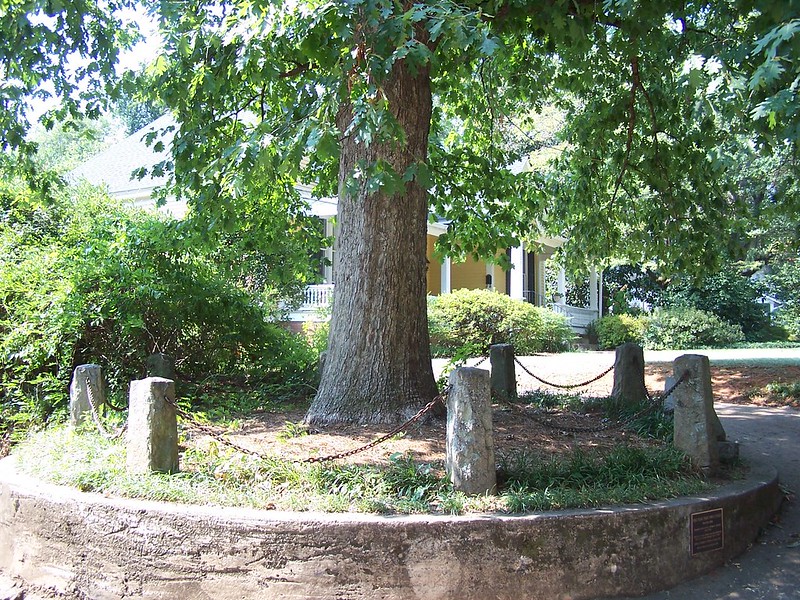Today we pay a visit to Athens, Georgia, specifically, the intersection of South Finley and Dearing Street.
That’s where you’ll find The Tree That Owns Itself.
This is the work of a professor at the University of Georgia, William H. Jackson, who in the early 19th century was particularly attached to a white oak.
It had been on his family’s property for hundreds of years, and he wanted to see it continue for hundreds more.
So he set it free, with a stone plaque that read in part, “I convey entire possession of itself and all land within eight feet of the tree on all sides.”
The problem with this decree was that, under Georgia law, a tree didn’t have the legal capacity to accept land.
And, sadly, the point became moot when a thunderstorm took out the tree on this day in 1942.
But by then, locals had taken a liking to the tree, just as Professor Jackson did. And so they used one of the original tree’s acorns to sprout a new tree on the site.
It became a tradition on Arbor Day to plant new seedlings from the tree’s acorns, though the ownership status of those trees is perhaps more straightforward.
When it comes to taking care of trees, you don’t get too much more intricate than a bonsai tree.
Bonsai lovers can spend endless amounts of time pruning and shaping and working with their trees so they’re just right.
A Japanese design company called Nendo came up with an idea: a 3D-printed bonsai. You prune it once and it looks exactly how you want forever.
Which is fine, as long as you don’t mind that it’s not an actual bonsai tree.
Do you think the 3-D bonsais can own themselves?
A Tree That Owns Itself? (Farmers Almanac)
Nendo’s 3D-printed bonsai tree does away with need for meticulous maintenance (Dezeen)
Don’t leaf us without backing the show on Patreon
Tree That Owns Itself photo by J. Stephen Conn via Flickr/Creative Commons

